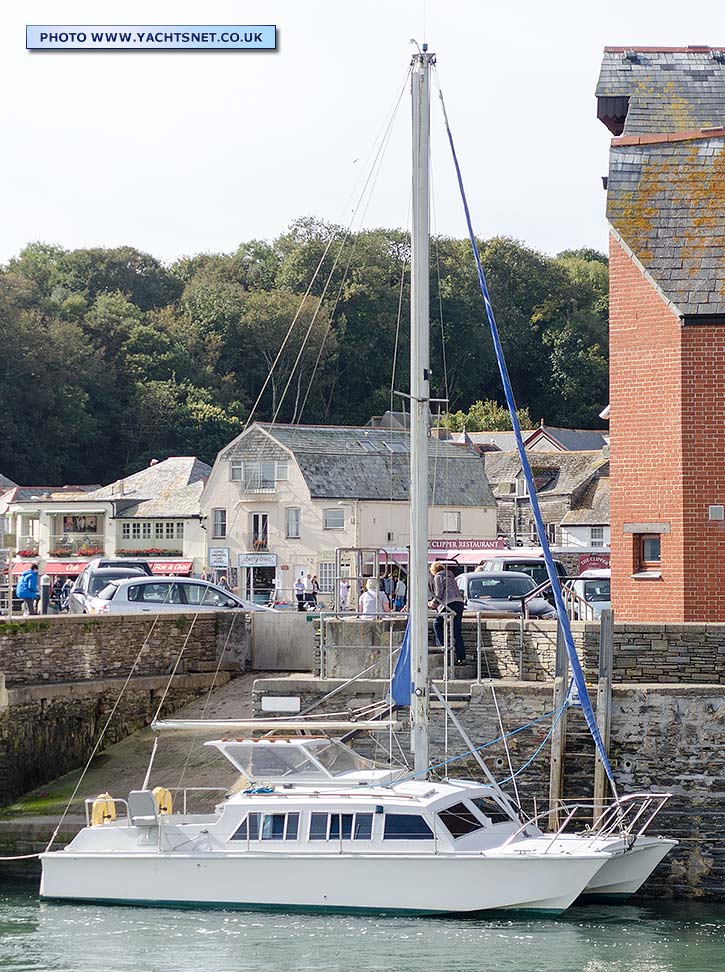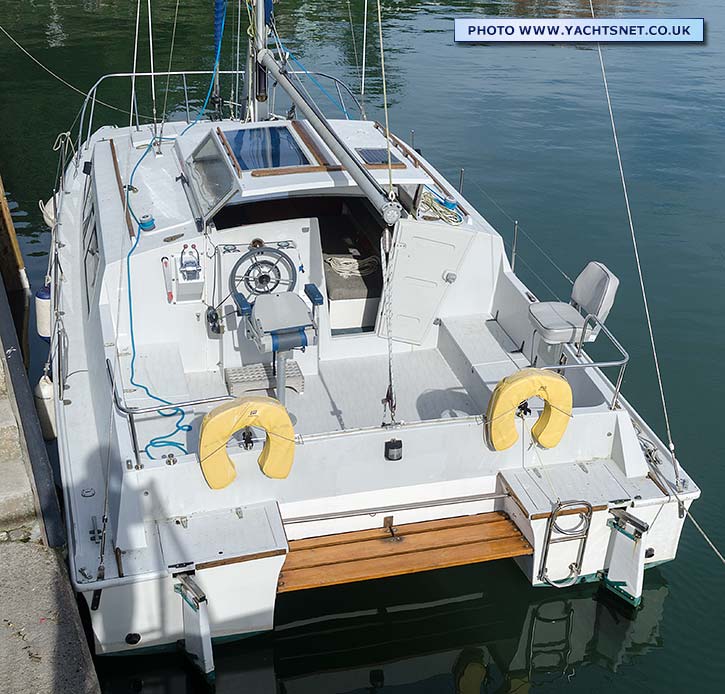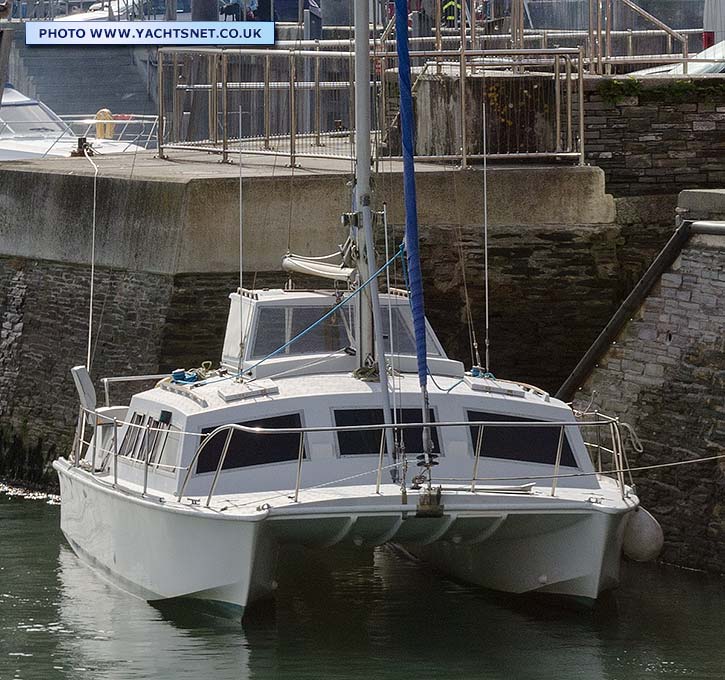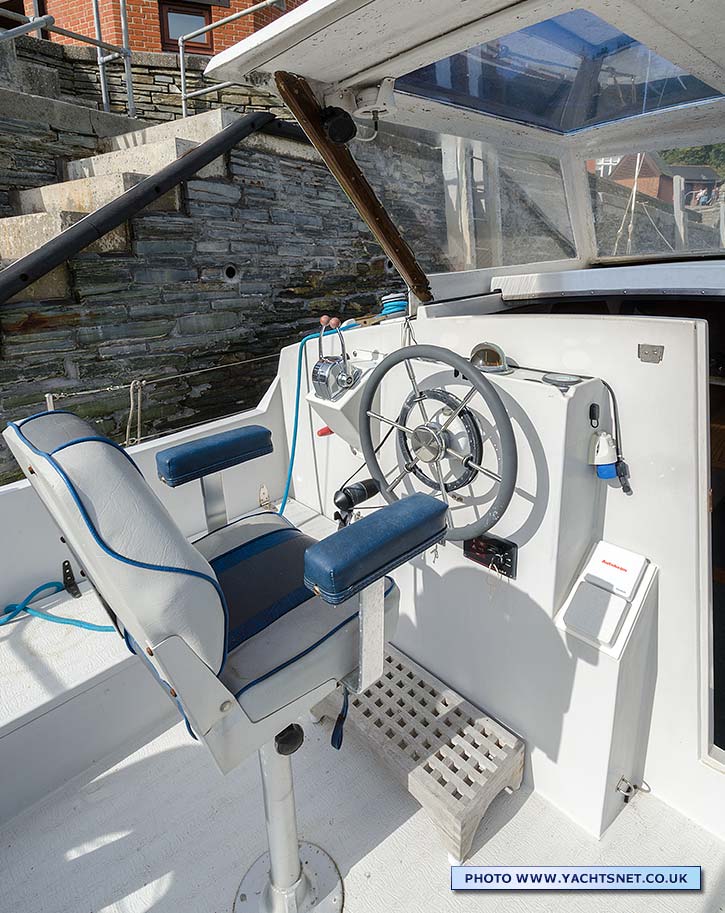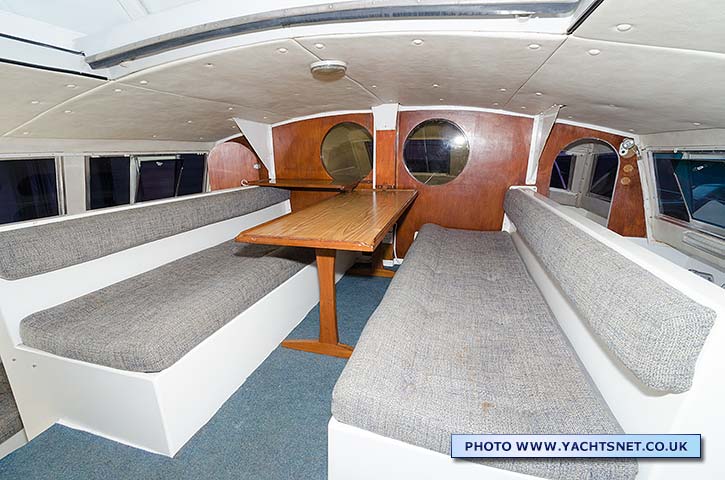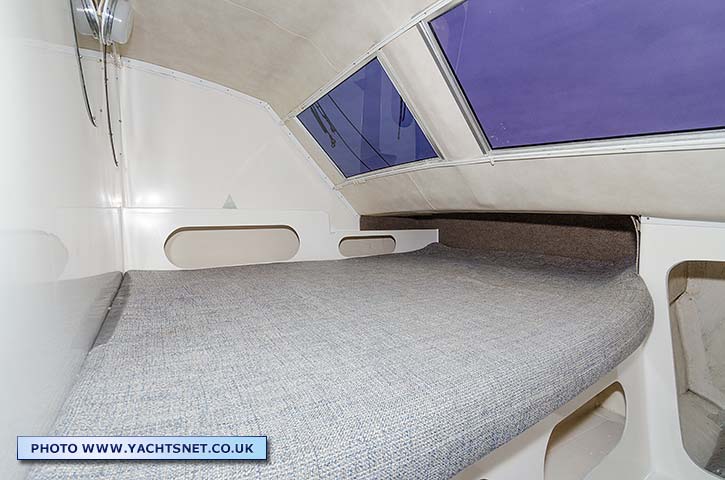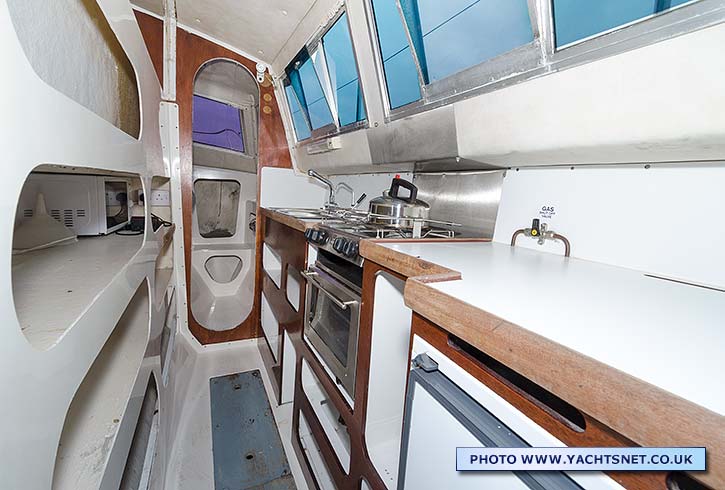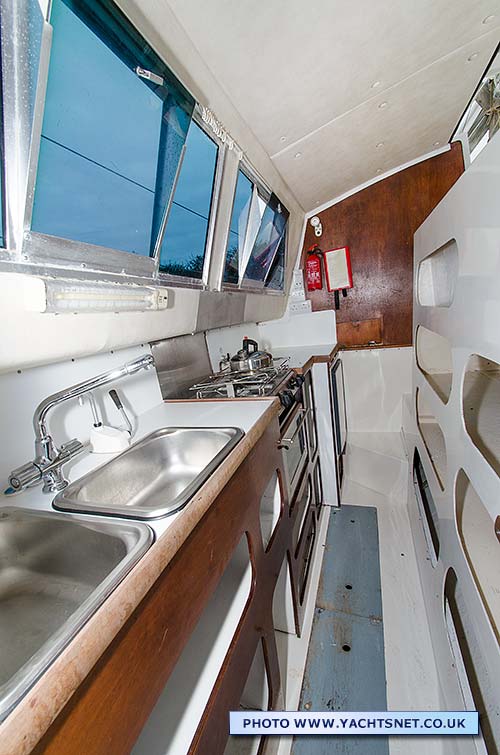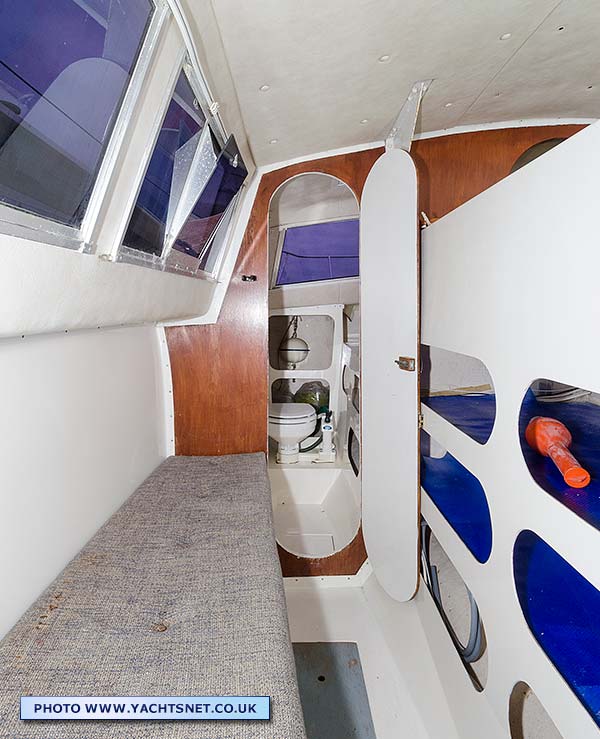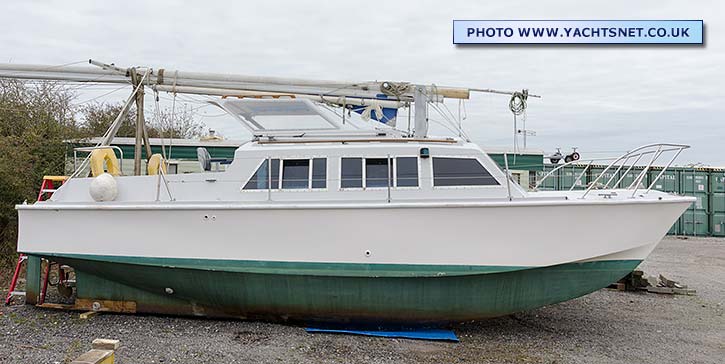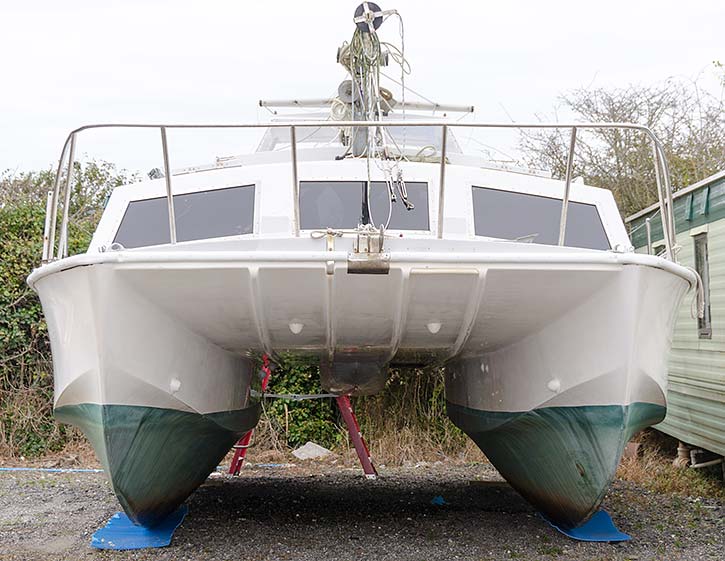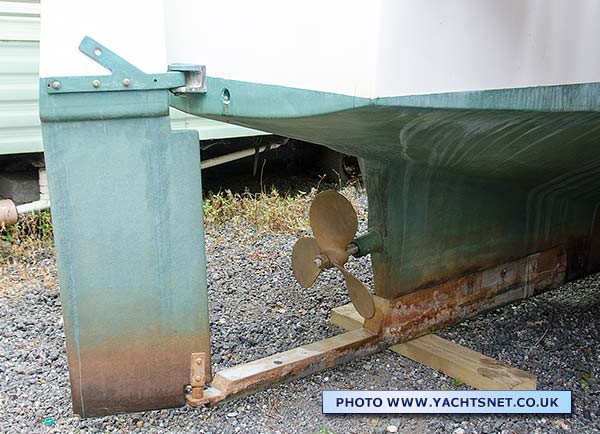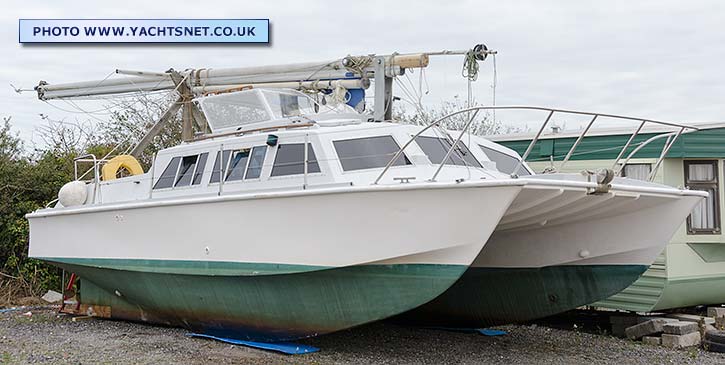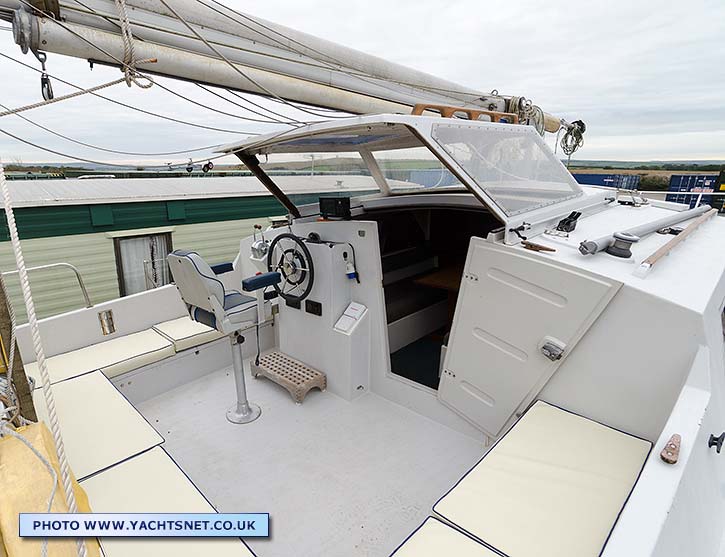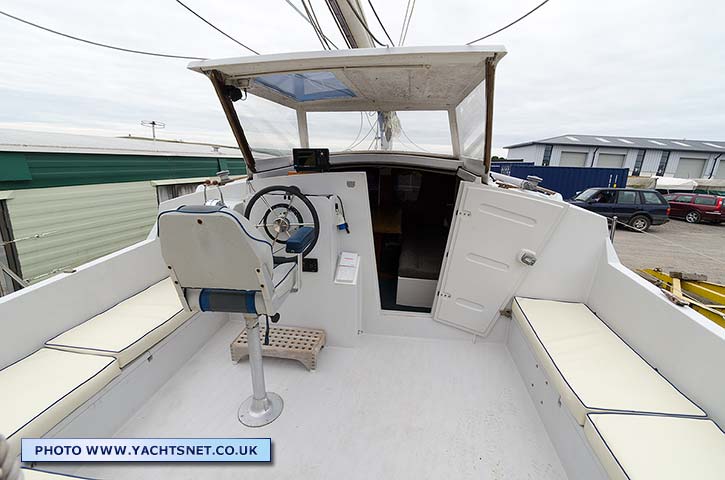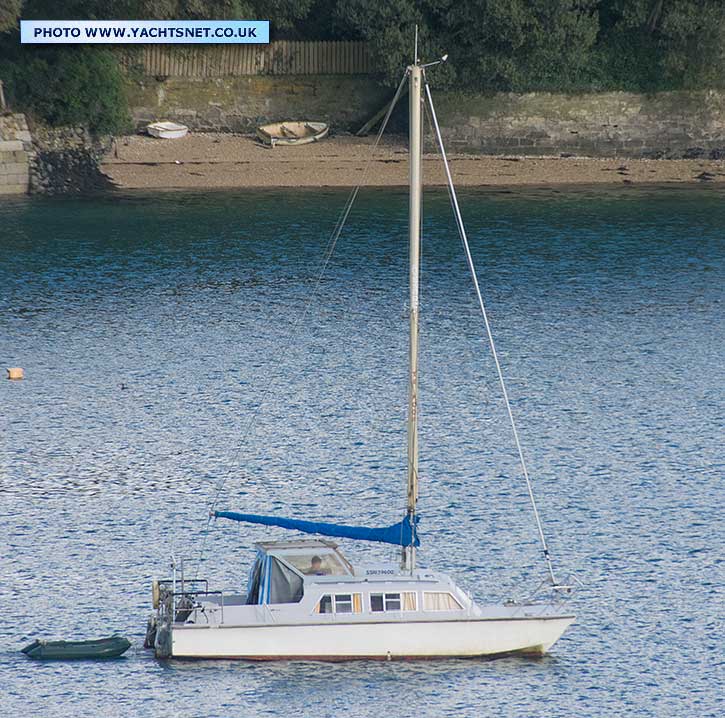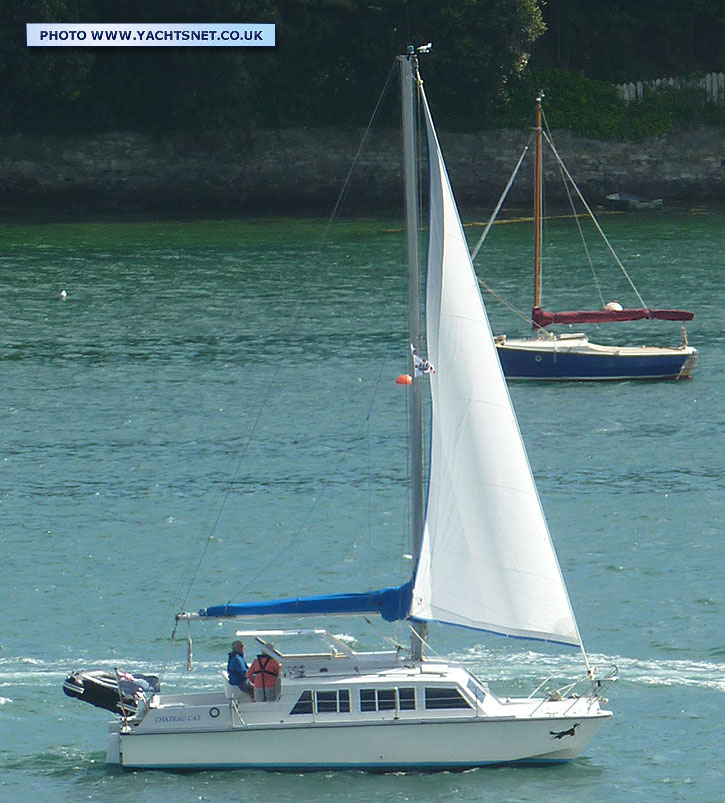| |
|
|
|
|
|
|
|
|
| © Yachtsnet Ltd. 2000/2025 |
|
|
|
| |
|
|
Yachtsnet's
archive of boat details and pictures
|
| |
The following information and photographs are
displayed as a service to anyone researching yacht types. HOWEVER THE PHOTOGRAPHS AND TEXT ARE COVERED BY COPYRIGHT, AND MAY NOT BE REPRODUCED WITHOUT THE PERMISSION OF YACHTSNET LTD. Details and photographs
are normally based on one specific yacht, but could be a compilation.
No reliance should be placed on other yachts of the same class being
identical. Where common variations exist, we have endeavoured
to indicate this in these archive details. |
Catalac 8M |
Brief details |
Builder |
Tom Lack Catamarans, Christchurch, Dorset. |
The Catalac 8M is GRP development of the plywood Bobcats, a family cruising catamaran from the 1960s. The twin hulls have chined vee-bottoms, and she will dry out upright on sand or mud bottoms. Like all catamarans, the lack of heeling beyond 5 or 10 degrees is a feature many people value, as is the space both below and in the cockpit. Catalacs have no pretensions to high performance, though offwind they can be a bit faster than comparable sized monohulls. |
LOA |
27' 0" |
Sail area |
386 sq ft main and genoa |
Beam |
13' 6" |
Rig |
Sloop |
Draught |
2' 4" |
Berths |
5 |
Displacement |
3,000 kgs |
Engine |
single outboard or twin diesel |
Keel type |
Vee-hulled catamaran |
BHP |
Various - twin diesels often 10 hp each, or outboards of 10-25 hp. |
 |
Tom Lack Catamarans Ltd. started out building Bill O'Brien designed Bobcats in marine ply, but in around 1970 started working with designer John Winterbotham and created the first Catalac 9M. The slightly smaller 8M followed in 1975, and was the most popular model of the range, which eventually included 10 and 12 metre versions.
The 8M and 9M Catalac designs were slightly modified to Mk II in about 1980, by adding a skeg and changing the rudders from lifting blades to fixed rudders supported at the base by the skeg. This modification improved the windward performance of the boats, and the yacht shown her, although built before this change, had a similar skeg and rudders fitted when new twin diesels were installed in 2010.
The 8M Catalacs were usually powered by a single outboard of 10 to 25 hp mounted on the back of the bridge deck, but some were built with twin Yanmar 1GM engines of 6 or 9 bhp. Outboard powered boats had the engine mounted centrally on the back of the bridgedeck. Fuel cosnumption was higher, particularly with two-stroke petrol engines.
Production of Catalac catamarans made by Tom Lack ceased around 1985, although other builders took over the various moulds and continued building Catalacs in smaller numbers thereafter. About 600 Catalacs in total were built by Tom Lack Ltd. |
All the Catalac range are pure cruising catamarans, with moderate displacement and modest but adequate sail area. They are not designed for high speed, although on all points of sail except dead to windward are as fast or faster than most similar length monohulls. Catalacs are absolutely not designed to "fly hulls", and except in very extreme conditions (unlikely to be experienced in any normal cruise) are virtually capsize-proof. Over the years quite a number have made transatlantic and longer passages. |
|
|
|

